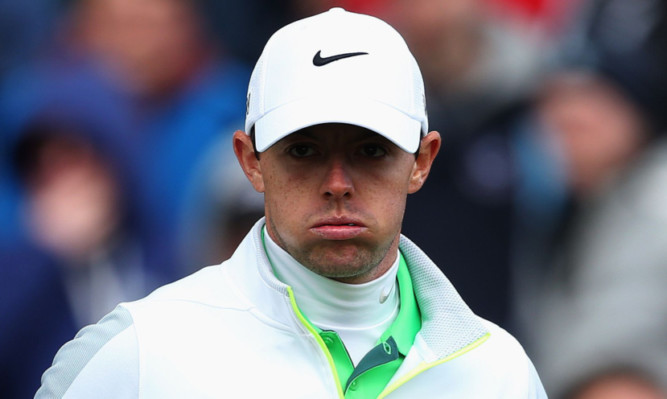If Rory McIlroy can stand four rounds on his ailing left ankle, winning the Open at St Andrews next week is still possible, believes Padraig Harrington.
The double Open champion won his second Claret Jug in successive years at Royal Birkdale in 2008 having been a doubt right up until his first hit with a wrist problem, and although there are similarities McIlroy is defending the title as well there are big differences as well, not all of them negative for Rory.
“In 2008 I injured myself five days before the Open, Rory was 12 days, which is a reasonable amount of time,” said Harrington, speaking at Gullane for the Aberdeen Asset Management Scottish Open. “I have no idea over the extent of his injury and I don’t think he has either yet, so waiting for the diagnosis is the overriding factor.
“If it’s at the wrong end of the scale, it could be a number of weeks but if it’s at the right end of the scale, it could be cleared up pretty quickly.”
Harrington even believes his injury eight years ago may have actually helped him win the title.
“I couldn’t prepare but that probably did me some good, looking back,” he recalled. “I just walked around with a wedge and a putter on the Wednesday, played a few chips, got the feel of the greens.
“But the thing was I didn’t play with an injury. The first time I really tested the wrist, at the sixth hole on the Thursday, I knew it was going to be okay.”
The other positive for McIlroy is that the Old Course is the Open venue he knows best.
“The great thing is that he doesn’t need to turn up at the Old Course and play a load of practice rounds, to be honest nobody needs that,” continued Harrington. “Of all the Championship venues we play at, that’s probably the one where you can almost just turn up and play.
“The Masters is like that too. You turn up and get the pace of the greens, hit a few chip shots, there is nothing tee to green you are going to learn on Monday, Tuesday or Wednesday. At St Andrews it only becomes a little different with a slight change of wind.”
However, the biggest negative is that left ankle is one part of the body a golfer can’t afford to have less than 100 per cent, added the Irishman.
“Not too many people have picked up on that, but it’s the biggest issue,” he said. “You can play golf with a bad right ankle without too much trouble. But it’s difficult putting weight on your left side.
“He needs to be able to put pressure on his left foot. It’s very hard to play golf if you can’t press on your left side.
“I did the same thing in 1991 when I was an amateur and didn’t get it treated properly and I probably still, to this day, have to work on my left ankle because of that injury.
“Rory won’t have that problem at all. The quicker you get it sorted the better and he’s already clearly done that.”
